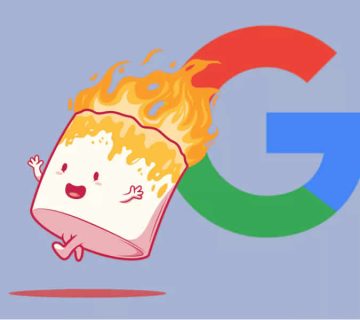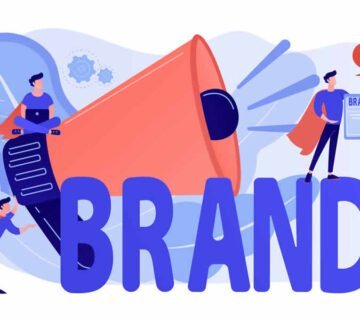SEO (Search Engine Optimisation)
Search engine optimisation (SEO optimisation) a process of optimising a website to most relevantly match the search queries of users from search engines. Firstly, of course Google SEO.
What is SEO optimisation?
Website search engine optimisation implies a complex of works to achieve high positions in search results and attract high-quality traffic.
Organic SEO is divided into on-page SEO and off-page SEO.
On-page SEO optimisation is aimed at improving the site: fixing technical errors, site navigation, site usability and site content.
Off-page SEO optimisation aims to generate quality inbound links and improve your website’s visibility on the web.
Both types of SEO are important. If you only have the off-page SEO done, you attract users to your site.
Without on-page SEO optimization, there will be traffic, but the conversion will not.
Confusing navigation, slow performance or over-optimized texts will scare away visitors, and they will quickly leave your resource.
If you deal only with internal SEO, the traffic growth and reaching the top will be slow (or maybe absent at all). You will have a great resource that no one visits.
On-page SEO / Internal SEO
- Start your SEO by check-points:
meta tags, headers, URLs, content, images and social media buttons. - Give each page a human-readable URL, a unique title, and h1 heading (non-identical to title). Add main keyword to URL, title and h1.
- Look at description. Rate how it motivates you want to visit the site.
- Check the nesting of the menu, fix it if the nesting is more than three levels.
- Read the texts on the site and rewrite them if they contain non-unique or outdated information. If the text is over-optimized (stuffed with too many instances of a keyword), fix it.
Optimising images
The website’s images are often too large and slow down the website’s loading speed, so scale the images to the necessary size, use only the appropriate format, work with vector images wherever possible.
Images should have their own alt and title meta tags. Fill in the tags to help crawlers index them.
Internal links / cross-linking
Cross-linking within the site from one material to another. Usually it’s being done for the convenience of site visitors and improve usability. When a visitor reads an article, he sees links to related materials and can immediately go to them. He does not need to search for additional information through a search. Or reading the product review in an online store, where the direct links to the product are indicated, the conversion increases. For SEO purposes, cross-links are welcome when distributing “weight” between pages or to rank the “long-tail” keywords.
User Behavioural factors
User behavioural factors show how visitors behave on site, how satisfied they are with the search result. To see behavioral factors, use site statistics: bounces, time on site, engagement, snippet CTR (click-through rate). SEO rankings are highly dependent on these factors, although they are more related to Internet marketing, because they affect user behavior.
Social factors
To rank your site, you have to engage with social networks correctly. Create your own group or business page at least in FB, more than half of sites from the top search results have a presence in social networks. Additionally, place “Share” buttons on the site so that users could “share” your information. Track the number of shares. This is a strong Google ranking factor.
Technical SEO Optimisation
Run it to fix errors on your site.
Check site for broken links first. Google Search Console will help you. If the page leads to nowhere, then the page weight (PA) goes down, and then the total site weight (DA). Remove such links or lead them to existing pages.
Eliminate duplicate information.
Find duplicate meta tags title, description and h1. Make them unique without losing their meaning. Then find duplicate content using the Siteliner.com service. Please note that the information on the site header, in the footer, the menu does not refer to duplicate content, although it is repeated on every page. It is called common content in the report.
Verification results example: unique content – 50%, shared – 40%, duplicate – 10%
Download speed affects the bounce rate. If the site takes more than 3 seconds to load, visitors leave.
A robots.txt file is a sitemap for crawlers. It allows what can and cannot be indexed, give permission for indexing to certain robots, prescribe redirects.
Off-site SEO / External SEO optimisation
External links factors. The links are still important for the site rankings, don’t be afraid to use links, but be sure to evaluate the risks when building your link profile. It should look natural. Track your link profile in Google Search Console.
Due to our experience, it is better to place several links from one high-quality resource than many unique ones from different sites of low quality. Make sure that number of links to your home page is fewer than the number of links to other pages. It also affects on your website positions in Google.
The presence of an exact keyword in the link anchor becomes optional. Use keywords and synonyms in the anchor; it’s the best way today. Also, we recommend using the relevant text with keywords next to the link with your Brand anchor.
SEO In a nutshell:
1. Website SEO is on-page and off-page. Audit the current state of the site and work both ways to achieve the best results.
2. On-page SEO optimization involves optimizing pages, images, internal linking, improving behavioral factors, UI/UX optimization, speeding up loading, eliminating duplicates and creating a robots.txt file and a sitemap.
3. Off-Page SEO optimization is related mainly to inbound link factors and the social media signals. Choose reputable and trustworthy sites for linking. Publish press releases, articles in well-known social media networks, collaborate with popular bloggers / vloggers, use crowd marketing methods.
Below, the possible agenda for SEO works
First, we will handle the Technical SEO optimisation:
- loading speed (increase it)
- SSL certificate (check, if no, install it)
- Site CMS site (usable or not) – It is often easier to transfer a site to a new, more advanced and convenient CMS than trying to improve the existing one (rarely, but it happens)
- Sitemap (set up correctly)
- Availability of robots.txt
- Favicon (desktop, mob and Apple devices in particular)
- Viewport tag for the mob version
- Human-readable URLs for the internal pages – the keyword / phrase must present in URL
- Do not use underscore in pages URLs
- Preferred domain – correct redirect from www.domain.com to domain.com – must be configured properly (usually the webmasters don’t bother with this issue. We are solving it)
Optimizing Site Content / Pages:
Header optimisation
- Title must contain the exact keyword
- Title must start with a keyword
- Title must be within 60 characters
- Title must have a quality word – “professional”, “best”, “effective”, etc. ))
- Title should preferably have the numbers “# 1 SEO company”, “the best SEO offer 2021”, “
we work since 1812” 🙂
Description optimisation:
- description must be within 160 characters
- description should contain the exact keyword and preferably start with it
- description should be a sentence / sentences, not a listing of keywords
- description should contain a qualitative description related to your keyword – professional, affordable, quality
- description must contain numbers – №1, 2021,
since 1492🙂 (optional)
Optimizing images
- page must contain images
- all images must have an alt tag
- alt image tag must have exact keyword
- each alt tag must start with a keyword
- keyword must be present in the name of the image file
- do not use underscore in the name of the image file
(i.e. image file name like “vapovarlporl_123213” is a bad idea)
Optimizing headers H1-H6
- on the site pages, there must be at least h1-h3 headings
- keyword must be present in headers h1-h3
- headings should not be duplicated
- heading H1 of the page should not be identical to the page Title
Optimisation of text materials
- text materials must contain 500+ words
- keyword should have at least 3 occurrences
- exact keyword should at least once appeared bolded, italicized, or underlined in text
- exact keyword should occur in 1st paragraph
- exact keyword should be in anchor text
At the same time, the content should be informative, motivating and attractive.
(you may use also the so-called SEO content, just do not try to force users to read it, more about this)
Pages without text content can be considered uninformative and excluded from the search.
Besides:
- availability of “share” buttons in social networks, primarily FB and Twitter
- availability of a blog / news feed on site
- correct cross-linking of site pages
- Convenient UI (user interface) and UX (user experience)
Optimisation of the site code
- W3C code validity
- No flash elements
- No inline CSS
- Text to HTML ratio is more than 2: 1
- Availability of schema.org markup
- Availability of Link to sitemap.xml





No comments